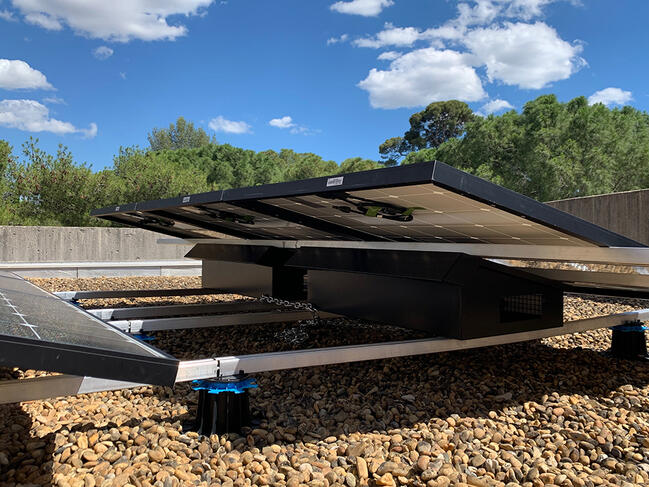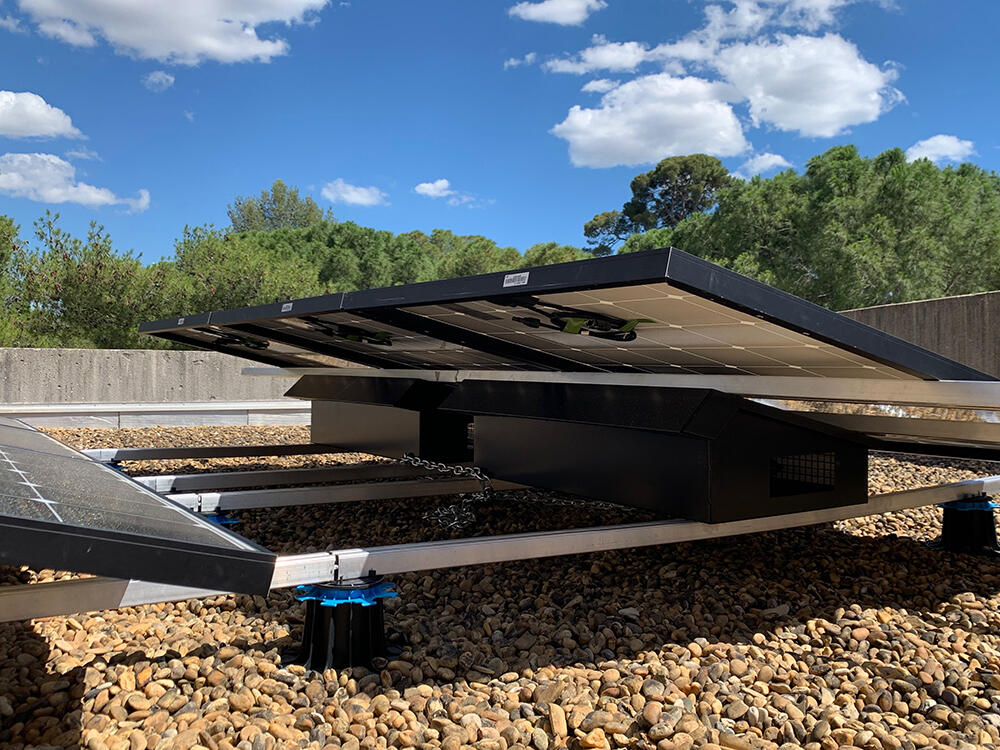You are here
Designing more energy-efficient data centres

The quantity of digital data created or replicated across the globe continues to swell. Between 2010 and 2020, it rose from 2 zettabytes (ZB) – or 2 trillion gigabytes (GB) – to 64 ZB. Worse still, forecasts predict a total of 181 ZB in 2025 (Statista study, 2021). This increase has an impact on energy consumption, as digital services represent between 6-10% of global electricity expenditure. In France, it is estimated at 10%. “According to the French ecological transition agency ADEME1, this is equal to the electricity consumption of a 1,000 watt radiator that each French person would run non-stop for 30 days,” stresses Abdoulaye Gamatié, a research professor at the Laboratory of Computer Science, Robotics, and Microelectronics of Montpellier (LIRMM)2.
In this context, it makes sense to explore the role of data centres, which are at the heart of this digital economy. Equipped with servers, switches, and storage and cooling systems, they provide cloud storage and computing services, most often to companies or organisations. “Centralising information in these locations ensures reliable access to data for the entities that need it, and at lower cost,” points out Gamatié. While efforts towards energy efficiency have been made, they cannot offset the growth of consumption.
There are multiple reasons for this. “First of all, data centres are, on average, used only 30% of the time, even though they are constantly supplied with power.” How can this be explained? “Quality service must be provided, all while maximising usage rates, which is challenging due to fluctuating demand. For instance, e-commerce sites get more traffic in December than in August, but to meet these peaks they must agree to allocate resources that are above their average,” indicates Gilles Sassatelli, a research professor at the LIRMM.
Video on demand and connected objects
This constant rise is also due to the emergence of new services, chief among them video on demand. “A video on Netflix is a few gigabytes, which is not much. However, it may be viewed millions of times. Each time it transits through these networks it generates energy consumption, and hence a significant carbon footprint,” Sassatelli adds. The increasing number of connected objects also plays a role. “All of these objects are dependent on a service that is generally hosted on a server.” And what of the impact of 5G? “The actual extent of its roll-out is not enough to account for the increase in traffic,” the scientist believes. “However, expanded spread of this technology would contribute to a rise in data traffic, with a knock-on effect on energy consumption,” Gamatié says.



Given that a growing number of services will automatically lead to an increase in traffic, what measures can be taken? “Current trends are towards the deployment of service as close as possible to the place of use (edge computing), which reduces data traffic on global infrastructure,” Sassatelli explains. Renewable energy sources, especially solar and wind power, have also been integrated within data centre plans for a number of years now. This is often done using an accounting approach, by creating a solar farm on a random site that is supposed to offset the annual consumption of data centres. There is also technological leverage: “We can design computing architectures as well as memory technologies not exclusively based on silicon, which will consume less energy while offering greater computing performance. Other levers being explored are controlling the functioning frequency of servers, the appropriate allocation of tasks to servers based on their nature, and virtualisation.”3
Exploring uses
Nevertheless, science alone cannot minimise the carbon footprint of digital technology, as usage will also have to be integrated. The fact that computing resources are dematerialised drives consumption without raising the question of their concrete impact on the physical infrastructure hosting them. This societal component can be addressed by policy measures; legislators have focused on the subject in recent years. For example, the Chaise law of 15 November 2021 seeks to reduce the environmental footprint of digital technology in France, including that of data centres. In collaboration with other colleagues at the LIRMM, the two researchers brought together all of these issues under the Genesis project4, namely “through a general reflection taking into account the limits of planetary resources”, Gamatié explains. The origins of the project date back to 2013.
Involved in collaborative European research projects, both scientists had the opportunity to observe and understand the practices of data centres. “We noticed that a significant portion of the infrastructure’s consumption came from components that are peripheral to computing functions. This prompted us to reflect on how to drastically reduce energy losses, all while using renewable energy,” Sassatelli reveals. After filing a patent, the team developed multiple generations of prototypes, with support from the southern French Occitanie Region. Genesis is based on a system of photovoltaic panels connected to small data centres.
The scientific approach of the project aims to integrate energy within a distributed system, like a finite resource managed in the same way as storage or computing capacity. Under this scheme, energy is allocated and transported between units, just like data. This concept required research at the intersection of computer science, on-board systems, and power electronics, in order to create software and hardware that possess these capacities.
Solar panels and social justice
Genesis has already produced very encouraging results during small-scale assessments. “Thanks to well-calibrated modelling using an experimental prototype installed at Polytech Montpellier, we observed that the ability to migrate both energy and data between computing units reduced the energy from the electrical network by 22-27%,”5 Gamatié notes. “In the summertime in the south, we might even obtain a surplus that could benefit certain local uses. The roll-out of such a system on the scale of a Montpellier neighbourhood could generate tens of thousands of euros6 per week, creating room for value-creation for the local authorities. This could enhance both social justice and local governance.”

The social dimension is highly important in Genesis, especially through the collaboration with the AAU research unit7, surrounding in particular the system’s roll-out in an urban environment by studying its effects from the standpoint of acceptability, the economy, and data governance89. One of the scenarios developed by the scientists targets a Nantes neighbourhood of 2,600 residents. Taking into account architectural constraints and using a solar panel system that directly powers small data centres, a 30% rooftop coverage would be possible, partially responding to the energy consumption of local digital activity. Another scenario in a Montpellier neighbourhood plans to cover up to 50% of rooftops, which would fully meet local demand.
Towards a large-scale roll-out?
Unknowns and difficulties must nevertheless still be taken into account, including life cycle analysis for components. “We are reflecting on how to mitigate the environmental impact of the solar panels and batteries that we use. The optimal sizing must be found for each site and purpose,” Sassatelli assures. The researchers are also promoting the use of second-generation servers – available during the frequent updates at traditional data centres – which provide greater carbon efficiency thanks to their extended lifespan.
The project has therefore proved promising, but to confirm this, the team must now develop a larger-scale prototype that can validate the roll-out hypotheses under the scenarios being studied. This involves securing funding and suitable support. In the meantime, the researchers are pursuing their scientific reflection. “The notion that energy can play a central role in the functions that require it opens up promising avenues,” Sassatelli states. “This principle could, for example, also be applied to mobile and modular robotics. The flow of energy, data, and commands could transit jointly, with subsequent advantages in terms of autonomy.” Another avenue of exploration is the pursuit of an interdisciplinary approach. Gamatié adds: “We must work in synergy with other disciplines and actors, such as the human and social sciences, in order to systemically grasp the societal and environmental issues connected to digital technology, in particular by adopting a truly sustainable standpoint.” ♦
Further reading on our site
New technologies' wasted energies
Greening data centres
- 1. Agence de la transition écologique.
- 2. CNRS / Université de Montpellier.
- 3. Virtualisation makes it possible to run a limited number of physical machines all while giving users the impression of having access to multiple machines.
- 4. Generation of ENErgy-Synergistic Information Systems.
- 5. ieeexplore.ieee.org/document/9851957
- 6. www.sciencedirect.com/science/article/abs/pii/S2210537922001755?via=ihub(link is external)
- 7. Ambiances, Architectures, Urbanités (CNRS / Centrale Nantes / ENSAN and ENSAG by delegation from the French Ministry of Culture / Université Grenoble Alpes).
- 8. www.sciencedirect.com/science/article/abs/pii/S2210537922001755?via=ihub(link is external)
- 9. This aspect of the project was or is funded by the CNRS Energy unit and the CNRS’s Mission for Transversal and Interdisciplinary Initiatives (MITI).
Explore more
Author
Specializing in themes related to religions, spirituality and history, Matthieu Sricot works with various media, including Le Monde des Religions, La Vie, Sciences Humaines and even Inrees.












